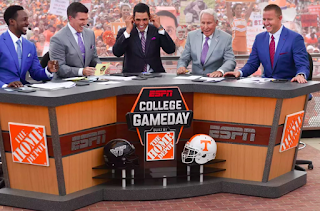Literature Review #1

Citation: Carson II, Loftus C., and Michelle A. Rinehart. “The Big Business of College Game Day.” Texas Review of Entertainment & Sports Law , vol. 12, no. 1, Fall 2010, pp.1-12. < EBSCOhost ,search.ebscohost.com/login.aspx?direct=true&db=aph&AN=66688442&site=ehost-live.> Summary: American colleges and universities once focused on educating young adults to be well-rounded, contribution members of society. Over a century later, college athletics has strayed from an all-inclusive, expanding horizons pastime and turned into high-stakes entertainment. Athletics were once used as tool to teach students the values of teamwork, dedication, discipline, and hard work. Now, athletic programs are viewed as beneficial to the institution, rather than the students and athletes. Saturday game day became a way to escape from the troubles of the week and to best other institutions. Game day created a feeling of camaraderie th